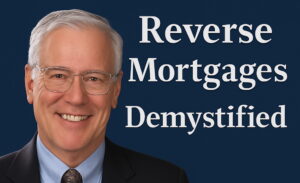If you’re thinking about selling an investment property, a 1031 exchange could potentially save you thousands of dollars in taxes. Savvy investors often use this strategy to defer capital gains and build wealth. While it’s not difficult to perform a 1031 exchange, there are many moving parts. This makes it critical to ensure you have a solid understanding of the basic rules and requirements before getting started.
What is a 1031 Exchange?
Section 1031 of the IRS Tax Code allows investors to defer capital gains taxes on a property sale by reinvesting the proceeds of the sale into another “like-kind” property. This transaction is known as a 1031 exchange or a “like-kind exchange.”
Since you’re not paying taxes on the proceeds from your property sale, you’re able to keep more of your money working for you. This gives you the potential to continue growing your real estate investment portfolio at an accelerated rate.
Qualified Intermediaries
The simplest way to complete a 1031 exchange is for two individuals to swap properties. However, it’s unlikely that you’ll find someone who has a property you want and who also wants the property you have. Therefore, most 1031 exchanges are “delayed exchanges.”
As part of the 1031 exchange rules, the IRS requires that the property owner never takes possession of the sale proceeds. Since the property sale and purchase don’t take place simultaneously, a delayed 1031 exchange requires the assistance of a third party, known as a “qualified intermediary.”
After you sell the first piece of property, the qualified intermediary holds the proceeds until you find a replacement. When you do, they use the funds to purchase the replacement property for you. When choosing your qualified intermediary, it’s important to note that this party cannot have any other formal relationship with either the property buyer or the seller.
The 1031 Exchange Timeline
When engaging in a delayed 1031 exchange, timing is critical. To ensure favorable tax treatment, you must comply with both the “45-Day Rule” and the “180-Day Rule.”
The 45-Day Rule
The 45-day rule states that you must find a replacement property within 45 days of selling the original property. You must also provide information about the property to your qualified intermediary before the end of the 45-day period. You can designate up to three properties, and in some cases, you may be able to designate more. However, to complete the 1031 exchange, you must ultimately close on one of the properties you’ve designated.
The 180-Day Rule
While you only have 45-days to find a “like-kind” property, you have a total of 180 days from the sale of the first property to close on your replacement property.
It’s important to note that the 45-Day Rule and the 180-Day Rule run concurrently. In other words, if you take the full 45 days to find your replacement property, you will only have 135 days from that time to close on it.
Eligible Properties
While the 1031 exchange rules require the purchase of a “like-kind” property, there’s actually quite a bit of flexibility. The term “like-kind” refers to the character or nature of a piece of property, not the quality or grade. For this reason, all real property in the United States is considered “like-kind” to other pieces of real property in the U.S.
- Some examples of the properties you can exchange include:
- Farmland for a commercial building
- Multi-unit apartment building for a rental condo
- Industrial property for retail rental
- Commercial property for residential property
- Raw land for improved real estate
- Oil and gas royalties for a ranch
In addition to being “like-kind,” IRS rules state that both the relinquished and the replacement property must be held by the exchanger for investment purposes or for productive use in a business or a trade. A property that is held primarily for sale would not qualify for favorable tax treatment under section 1031.
1031 Exchange Benefits
Deferring capital gains taxes is the number one advantage of a 1031 exchange. Deferring taxes allows you to take advantage of a compounding effect, which can potentially accelerate portfolio growth. While this is the most obvious advantage, there are other important benefits you may recognize when completing a 1031 exchange.
Ability to Exchange Out of Undesirable Assets
Completing a 1031 exchange gives investors the option to exchange underperforming or undesirable real estate assets for a more appealing piece of real estate. Property owners who want to move away from time-consuming active management also have the option of using an investment vehicle known as a Delaware Statutory Trust (DST) in lieu of purchasing another piece of real property. The flexibility to choose from a wide variety of replacement assets is an important advantage for many investors.
Greater Diversification
The ability to easily switch from one type of property to another also provides the potential for additional diversification. For example, an investor holding a single managed property can complete a 1031 exchange into a variety of passive investments. This allows them to reclaim the time they were spending on property management and spread risk across several different markets.
Ability to Build Equity Over Time
There’s no limit to the number of times you can complete a 1031 exchange, so it’s possible to continually roll your real estate gains over from one investment property to the next. Each time you trade up, you have the chance to build more equity. An investor who starts out with one single-family rental property can use a 1031 exchange to upgrade to a duplex, then a fourplex, and so on. Using this strategy is an excellent way to build a large portfolio of real estate assets.
If you continue exchanging properties for long enough, when you ultimately sell, you’re also likely to be taxed at the long-term capital gains rate. This will result in additional tax savings.
Additional Exit Flexibility
By exchanging a single investment property for multiple smaller properties, investors can take advantage of the ability to sell portions of their real estate portfolio over time instead of all at once. This creates additional flexibility and freedom.
Potential Risks to Consider
While a 1031 exchange offers many potential benefits, it’s also important to consider the possible drawbacks. Failing to keep the following risks in mind can result in a transaction losing its qualification as a 1031 exchange. This will likely lead to a large tax liability.
Tight Timelines
The IRS very rarely allows for extensions of the 45-day and 180-day rules. Investors who fail to meet these deadlines will lose their opportunity to enjoy the benefits of a 1031 exchange. If you’re not confident you’ll be able to locate a replacement property within 45 days and close within 180 days, then a 1031 exchange is not your best option.
Difficulty Finding “Like-Kind” Properties
While investors have a lot of flexibility in choosing replacement properties, the tight timeline may make it difficult to find one that’s suitable. It’s important that your replacement property meets your long-term investment goals. The last thing you want to do is settle for an undesirable property or one that will give you subpar performance because you’re scrambling to meet the required deadlines.
Taxation on “Boot”
To get the full advantage of a 1031 exchange, you’ll want to purchase a replacement property that costs the same amount or more than the relinquished property. If there’s money left over after the exchange is complete, the qualified intermediary will pay it back to you. This cash is called “boot” and it is taxed as capital gains.
Investors also sometimes forget to consider loans they’ve taken out on the property. If you don’t get cash back but your new mortgage is lower than the mortgage on the relinquished property, this is another form of boot. It’s taxed the same as if you had received cash. If you do this, you’ll need to make sure you have enough liquidity to pay your tax liability.
Reduced Tax Basis
A 1031 exchange reduces the replacement property’s tax basis by the amount of the deferred gain. This means that when you ultimately sell the property without doing an exchange you’ll have to pay taxes on the gains you had previously deferred.
Future Uncertainty
While deferring taxes sounds appealing, it’s important to remember that the future is uncertain. There’s a chance that capital gains tax rates could be significantly higher when you ultimately sell your property. Many investors are comfortable taking this risk, but it’s still important to consider.
Conclusion
We hope you’ve found this guide helpful. Now that you know all the basics of a 1031 exchange, you’re in a better position to decide whether it’s the right strategy for you. As long as you’re comfortable with the potential risks, there are many benefits and opportunities associated with a 1031 exchange.
It’s important to note that the information in this material is not intended as tax or legal advice. Before you make your final decision, it’s important to discuss your property exchange strategy with both a financial advisor and a tax professional.
We encourage you to find additional insights in our eBook, Top 11 Misconceptions About 1031 Exchanges, which you can download for free HERE.
This is for informational purposes only, does not constitute as individual investment advice, and should not be relied upon as tax or legal advice. Please consult the appropriate professional regarding your individual circumstance. Because investors’ situations and objectives vary this information is not intended to indicate suitability for any particular investor.
DST 1031 properties are only available to accredited investors (typically have a $1 million net worth excluding primary residence or $200,000 income individually/$300,000 jointly of the last three years) and accredited entities only. If you are unsure if you are an accredited investor and/or an accredited entity please verify with your CPA and Attorney.
There are material risks associated with investing in DST properties and real estate securities including liquidity, tenant vacancies, general market conditions and competition, lack of operating history, interest rate risks, the risk of new supply coming to market and softening rental rates, general risks of owning/operating commercial and multifamily properties, short term leases associated with multi-family properties, financing risks, potential adverse tax consequences, general economic risks, development risks, long hold periods, and potential loss of the entire investment principal.
Potential cash flows/returns/appreciation are not guaranteed and could be lower than anticipated. Diversification does not guarantee a profit or protect against a loss in a declining market. It is a method used to help manage investment risk.
Securities offered through Concorde Investment Services, Inc. (CIS), member FINRA/SIPC. Insurance offered through Concorde Insurance Agency, Inc. (CIA) Halston Pacific is independent of CIS and CIA.



